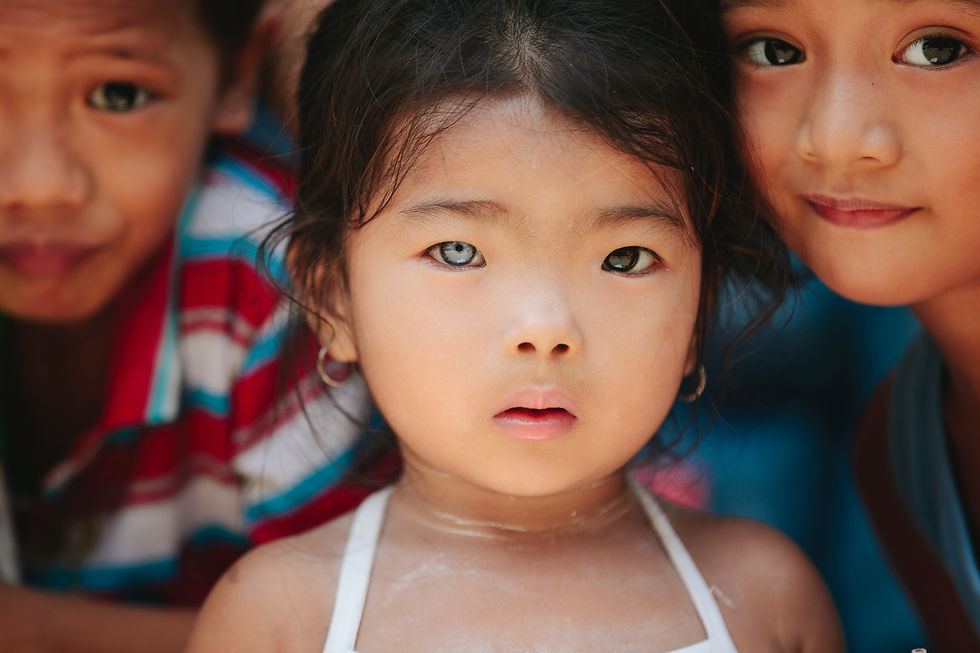INVEST IN EYE HEALTH LITERACY
- lee06970
- Oct 5, 2022
- 2 min read
Updated: Mar 17, 2024
It’s estimated that 87-million American minority adults have low health literacy, putting them in triple jeopardy. This is because they likely also have limited access to care, are less likely to participate in screening and disease prevention activities, and are less likely to manage a chronic disease. Low health-literacy rates contribute to the enormous health disparities within impoverished communities. Many children do not receive proper screenings and care, resulting in preventable vision-loss.
More specifically, childhood poverty impacts eye health across six categories:
Physical Health:
Nutrition: Children growing up in poverty often have limited access to nutritious food. Deficiencies in essential vitamins and minerals can affect eye health. For instance, vitamin A deficiency is linked to night blindness and other vision problems.
Healthcare Access: Regular eye check-ups and early detection of eye conditions are crucial. However, impoverished families may struggle to afford healthcare services, leading to delayed diagnoses and treatment.
Socio-Emotional Development:
Stress and Anxiety: Poverty-related stressors can impact mental health, which, in turn, affects eye health. Chronic stress may contribute to conditions like dry eyes and eye strain.
Self-Esteem: Visual impairments can affect a child’s self-esteem. Poverty-related stressors may exacerbate feelings of inadequacy, potentially impacting eye health.
Educational Achievement:
Learning Environment: Impoverished communities often lack proper lighting and educational resources. Inadequate lighting can strain the eyes, affecting reading and learning.
Vision Problems and Learning: Uncorrected vision problems (like myopia or astigmatism) can hinder academic performance. Children may struggle to read, write, or participate in class.
Employment Rates:
Job Opportunities: Visual impairments can limit career choices. Poverty-stricken individuals may face barriers in accessing jobs that require good eyesight (e.g., driving, certain trades).
Productivity: Poor eye health affects productivity at work. Untreated conditions like cataracts or glaucoma can lead to absenteeism and reduced efficiency.
Cultural and Physical Environments:
Access to Protective Eyewear: Children in impoverished areas may lack proper eyewear (e.g., sunglasses, safety glasses). Exposure to harmful UV rays or debris can harm the eyes.
Environmental Toxins: Some impoverished neighborhoods have higher exposure to environmental toxins (e.g., pollution, lead). These can impact eye health.
Complex Factors and Disparities:
Racial and Ethnic Disparities: Children of color are disproportionately affected by poverty. They may face unique challenges related to eye health due to systemic inequalities.
Access to Vision Services: Poverty limits access to eye exams, glasses, and treatments. Lack of awareness and transportation barriers further exacerbate disparities.
Adults with less than a high school education are almost twice as likely to have difficulty seeing as those who have a high school education or more -- 14% and 8% respectively. Among people with an annual income under $20,000, 15% have visual impairments as compared to 6% of people with an annual income of $55,000 or more.
In October, 2022, FFF celebrated the achievements of people who are blind and visually impaired, while raising awareness for the importance of eye health with a free community Vision Fair at Cal State Los Angeles. See VisionFair.org for more details.





Comments